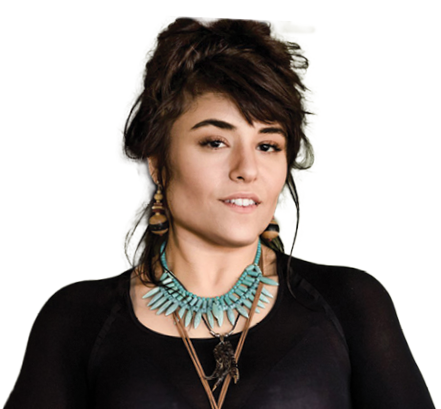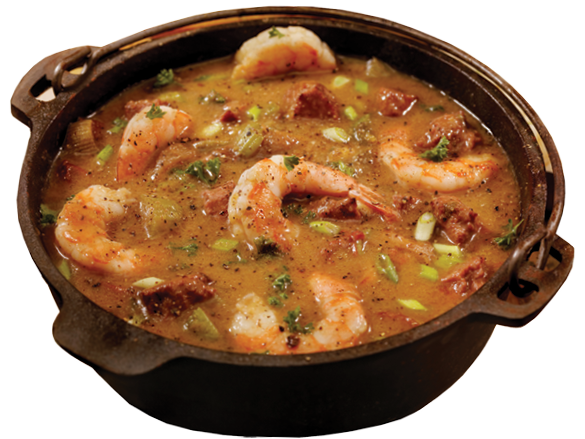Aim: What are the building blocks of New Orleans second line music?
Summary: Students will learn “Tôt Tôt Le Mardi Gras” and explore rhythmic layers and call & response in a second line band.
Materials: Musical Explorers online audio
Standards: GA: MK-2GM.1, MK-2GM.6, MK-2GM.7, MK-2GM.9, MK-2GM.10 SC: GM.PR.NL-AH.3, GM.RE.NL-AH.6, GM.RE.NL-AH.7, GM.CN.NL-AH.8, GM.CN.NL-AH.9
Vocabulary: Creole, rhythmic layers, second line, syncopation
The second line is a brass band parade. The “first line “ or “main line” refers to the band itself or the people of honor who would be walking up front in the parade. The “second line” are the people dancing, joining, and celebrating in the parade.
Sing “Tôt Tôt Le Mardi Gras”
- Listen to “Tôt Tôt Le Mardi Gras,” Track 6.1.
Track 6.1 – “Tôt Tôt Le Mardi Gras” Song
- Sing along with Marcella by practicing “Tôt Tôt Le Mardi Gras” call and response, Track 6.2.
Track 6.2 – “Tôt Tôt Le Mardi Gras” Call & Response
“Tôt Tôt Le Mardi Gras”
[original lyrics]
Tôt tôt le Mardi Gras
Tôt tôt le Mardi Gras
Le Mardi Gras pour la charité
Tôt tôt le Mardi Gras
Le Mardi Gras va en danser
Tôt tôt le Mardi Gras
Pousse pas moi et passe en bas
Tôt tôt le Mardi Gras
Lot gumbo est no faveur
Tôt tôt le Mardi Gras
La vie demande un bon gumbo
Tôt tôt le Mardi Gras
La vie demande pour la femme dancé
Tôt tôt le Mardi Gras
La vie demande pour un l’homme dancé
Tôt tôt le Mardi Gras
Le Mardi Gras pour y charité
Tôt tôt le Mardi Gras
C’est tôt tôt le Mardi Gras
Tôt tôt le Mardi Gras
(x6)
“Early Early on Mardi Gras”
[translated lyrics]
Early early on Mardi Gras
Early early on Mardi Gras
The Mardi Gras is for charity
Early early on Mardi Gras
The Mardi Gras is for dancing
Early early on Mardi Gras
Don’t pass by me, pass over there
Early early on Mardi Gras
That gumbo is not good/is not spicy enough
Early early on Mardi Gras
Life demands a good gumbo
Early early on Mardi Gras
Life demands a woman must dance
Early early on Mardi Gras
Life demands a man must dance
Early early on Mardi Gras
The Mardi Gras is for charity
Early early on Mardi Gras
It’s early early on Mardi Gras
Early early on Mardi Gras
(x6)
Learn About Creole
The phrase “tôt tôt le Mardi Gras” translates to “early early the Mardi Gras” which sounds a little funny in English. This is because the original song lyrics are in Louisiana Creole. Creole is a combination of many languages and cultural influences from Europe and the Caribbean. Louisiana Creole includes many French words and phrases.
Because it is a mixture of languages, Creole phrases don’t always translate perfectly into English. The phrase “tôt tôt le Mardi Gras” is the Louisiana Creole way of saying “early on Mardi Gras day.”
“Tôt Tôt Le Mardi Gras” in Marcella’s Community

“I learned this song in my childhood. ‘Tôt Tôt Le Mardi Gras’ would be sung on a Creole Mardi Gras run in the country where people dress up and travel by foot, horseback or slow truck with a trailer while people play traditional music on the trailer bed.

People would go from house to house asking neighbors for things to contribute to their gumbo–fresh produce from neighboring farms, butchered meats, and they’d likely chase a chicken! All of these items would go into our gumbo. As we traveled door to door in costume, music was flowing and everyone was dancing and singing. We’d end up making a big pot of gumbo at someone’s house where there would be more dancing and singing.”
Performing Call & Response
- Call & response is an important tradition in second line music because it encourages the community to sing and/or play along. Remind students that call & response is when one musician offers a phrase and a second musician(s) answers with a related answer.
- Use SG 39 to have students explore some call & response examples and make up their own examples as a class, individually or in small groups.
- Students can practice taking turns as the caller.
- Using “Tôt Tôt Le Mardi Gras” Instrumental, Track 6.3, sing along as different students or small groups take turns as the caller.
Track 6.3 – “Tôt Tôt Le Mardi Gras” Instrumental
Explore Second Line Rhythmic Layers & Syncopation
- Follow along with Victor’s demonstration video below.
- Second line music has many rhythmic layers. These rhythms come from the mix of musical traditions that were shared in New Orleans. When the rhythms come together, they can create syncopation which is when the rhythm lands “off” the beat.
- Let’s learn some rhythms and practice syncopation as a class.
- Students can practice each rhythm using body percussion, classroom instruments, or found objects (see SG 3).
- While practicing each layer, break the class in half or into small groups. When the class is ready to create syncopation, have the groups play together!
Layer One: Main Beat Quarter Note Rhythm
- Percussion instruments like the snare drum keep the beat of the second line band. They are the foundation to inspire the rest of the band to play the melody and improvise.
- Using Rhythm Track Layer One, Track 6.4, have students stomp/walk and speak beats 1-2-3-4.
Track 6.4 – Rhythm Track Layer One
Layer Two: 3-2 Clave Rhythm
- Now we are going to add a more complicated layer, the 3-2 clave rhythm. This layer is important for syncopation because it creates that “off” beat.
- Using Rhythm Track Layer Two, Track 6.5, have students clap the 3-2 clave rhythm. Students can also practice the clave by saying: “come, let’s catch the beat” while clapping.
Track 6.5 – Rhythm Track Layer Two
Layer Three: Straight Eighth Notes
- Now we are going to add a more complicated layer, the 3-2 clave rhythm. This layer is important for syncopation because it creates that “off” beat.
- Using Rhythm Track Layer Two, Track 6.5, have students clap the 3-2 clave rhythm. Students can also practice the clave by saying: “come, let’s catch the beat” while clapping.
Track 6.5 – Rhythm Track Layer Two
Layer Four: Big Beat 4
- Now we are going to add a layer that helps create the second line “feel.” This layer is called “big beat 4” and creates syncopation by emphasizing one sound.
- Using Rhythm Track Layer Four, Track 6.7, practice big beat 4.
- Go back to layer one by counting four steady beats. Next, think beats 1-2-3 in your head and make a big sound on four.
- Who has some ideas on how we can make beat 4 sound really big? (stomp, say it loud, add a drum…)
Track 6.7 – Rhythm Track Layer Four
Create Syncopation
- Now we are going to create syncopation as a group by playing our rhythmic layers at the same time.
- As a class:
- Continue layer one (main beat) and layer four (big beat 4) in the feet.
- Clap layer three (straight eighth notes).
- Say “come let’s catch the beat” aloud to add layer two (3-2 clave).
- If the class has divided into groups to practice the layers, invite groups to play their rhythms at the same time. You can experiment with different combinations and/or utilize the rhythm tracks in combination with the students.
- After performing the rhythmic layers ask the students:
- How do syncopated rhythms feel different from straight rhythms?
- How does your body move differently?
- Split the class in groups and layer the rhythms together to create the second line foundation. Perform along with full song, Track 6.1.
Track 6.1 – “Tôt Tôt Le Mardi Gras” Song
Discover Mardi Gras & Decorate a Mardi Gras Umbrella
- Use SG 40 to discover the sights, smells, and sounds of Mardi Gras.
- In French, “Mardi” means Tuesday and “Gras” means fat, so Mardi Gras means “Fat Tuesday.” This holiday is always celebrated the Tuesday before Ash Wednesday when the season of Lent begins. During the Lent season, some people abstain from eating rich foods like fats and sweets. On Mardi Gras, they have a big party with costumes, food, and music before Lent starts.
- Using SG 41 decorate a Mardi Gras umbrella using your favorite colors and shapes.
Musical Word Wall
Add Creole, rhythmic layers, second line, and syncopation to the Musical Word Wall.
PDF Downloads
Audio Tracks
Track 6.7 – Rhythm Track Layer Four
Track 6.6 – Rhythm Track Layer Three
Track 6.5 – Rhythm Track Layer Two
Track 6.4 – Rhythm Track Layer One
Track 6.3 – “Tôt Tôt Le Mardi Gras” Instrumental
Track 6.2 – “Tôt Tôt Le Mardi Gras” Call & Response
Track 6.1 – “Tôt Tôt Le Mardi Gras” Song
